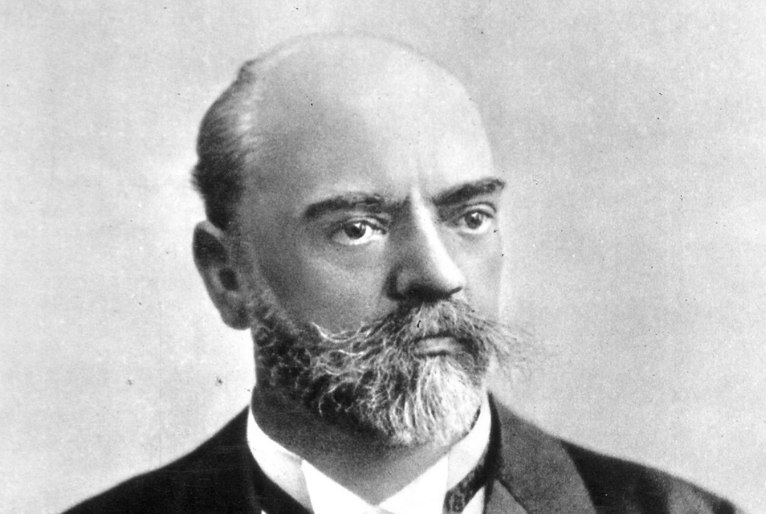Antonín Dvořák: A Complete Biography
Introduction
Antonín Dvořák (1841–1904) stands among the most celebrated composers of the Romantic era. Famed for his richly melodic compositions, Dvořák masterfully wove elements of Bohemian folk music with classical traditions, creating works of global appeal. His music—ranging from symphonies and chamber works to operas and choral pieces—bridged the old world and the new, culminating in his iconic Symphony No. 9 in E minor (“From the New World”), composed during his time in the United States.

Childhood
Antonín Leopold Dvořák was born on September 8, 1841, in Nelahozeves, a small village near Prague in what was then the Austrian Empire (now the Czech Republic). He was the eldest of nine children in a modest, devout Catholic family. His father, František Dvořák, was an innkeeper and butcher who also played the zither, which likely influenced Antonín’s early interest in music (Oxford Music Online).
As a child, Dvořák showed exceptional musical talent. He began violin lessons around the age of six and later learned piano and organ. His family recognized his gift and supported his education. By age 12, Dvořák was sent to Zlonice to live with an uncle and attend school, where he received his first formal training in music theory and performance (Grove Music Online).
Youth
In 1857, at 16, Dvořák moved to Prague to study at the Prague Organ School. Though his formal training was focused on organ performance, he also studied composition, harmony, and counterpoint. During this time, he supported himself by playing viola in local dance bands and theater orchestras, including the Bohemian Provisional Theater Orchestra, conducted by Bedřich Smetana, a major figure in Czech music (Britannica).
The 1860s were difficult for Dvořák financially. He gave private lessons, worked as a church organist, and composed in his spare time. However, these early years were crucial for the development of his musical style, blending classical forms with Slavic melodic patterns.
Adulthood
Dvořák’s breakthrough came in 1874, when he applied for and won the Austrian State Prize for Composition, judged by a panel that included Johannes Brahms. Brahms was deeply impressed and helped Dvořák connect with music publisher Fritz Simrock, launching his international career.
In 1878, Simrock published Dvořák’s Slavonic Dances, which became an instant hit across Europe and the United States. The dances showcased Dvořák’s deep love for Czech folk music and his unique ability to integrate these idioms into classical forms (The Kennedy Center).
Throughout the 1880s, Dvořák composed prolifically, producing symphonies, chamber works, concertos, and operas. His fame grew, and he received invitations to perform and conduct abroad.
In 1892, Dvořák accepted an invitation to become the director of the National Conservatory of Music in New York City. He spent three years in the United States, where he encouraged American composers to draw from African American spirituals and Native American music. It was during this time that he composed the New World Symphony, which remains one of the most frequently performed symphonies in the world (Naxos Music Library).
Major Compositions
Dvořák’s music is notable for its lyrical beauty, rhythmic vitality, and nationalistic spirit. His most celebrated works include:
- Symphony No. 9 in E minor, “From the New World” (1893): Written in New York, this symphony blends Bohemian melodies with African American spirituals and Native American themes, symbolizing the possibilities of a distinctly American classical sound.
- Cello Concerto in B minor (1895): A monumental work for cello and orchestra, considered one of the greatest concertos ever written for the instrument.
- Slavonic Dances (Op. 46 and Op. 72): Energetic and colorful orchestral dances inspired by Czech folk rhythms.
- “American” String Quartet No. 12 in F major (1893): Composed in Spillville, Iowa, the quartet captures Dvořák’s impressions of America while maintaining his Czech musical identity.
- Stabat Mater (1877) and Requiem (1890): Profound choral works that reflect Dvořák’s deep religious convictions.
- Rusalka (1901): A poignant opera based on a Slavic fairy tale, featuring the famous aria “Song to the Moon.”
Death
After returning to Prague in 1895, Dvořák resumed teaching at the Prague Conservatory and composed several operas and chamber works. Though he remained active and respected, his final years were quieter.
Antonín Dvořák died on May 1, 1904, at the age of 62, following a brief illness. He was buried in Vyšehrad Cemetery in Prague, among other great Czech cultural figures. His death marked the end of a life that had deeply influenced both European and American musical landscapes.
Conclusion
Antonín Dvořák’s legacy endures through his vibrant, emotionally rich compositions that celebrate both national identity and universal human expression. From humble beginnings in rural Bohemia to international acclaim in Europe and the United States, Dvořák remains a towering figure in classical music. His encouragement of national musical traditions—especially during his time in America—continues to inspire composers around the world.

Comments are closed